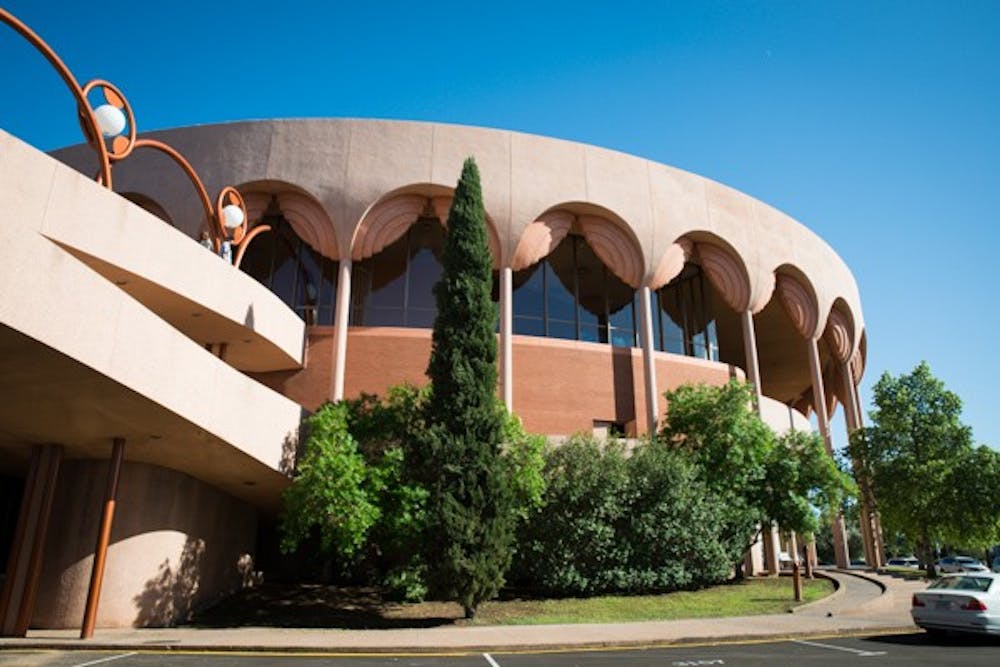Watching an orchestra perform is tantamount to seeing a living breathing entity, one made up of wood, strings, metals and rubber.
There are various emotions to see and consider up on stage, all of which could switch in a single instant. Joy becomes despair; sadness becomes happiness. Consistently in flux, these elements are all for the entertainment of a live crowd.
The large halls of the Grady Gammage Memorial Auditorium put these emotions on display Tuesday, as it hosted the Classic and Romantic Virtuosity production, performed by the student-led ASU Chamber and Symphony Orchestras. Wielding the conductor's baton was professor of music Timothy Russell, who looked as if he couldn’t be happier to be there.
The first half of the performance produced a pseudo-tribute to Mozart, as the chamber orchestra performed the "Overture" in "La clemenza di Tito" and "Sinfonia Concertante in E-flat Major."
The "Overture" hushed the stray whispers of conversation among the audience. The instant switches from calm violins to the bombast of the double bass section magnified the overall upbeat tone of the piece, providing an enthusiastic introduction to the concert.
Afterwards, Russell introduced what he called a “cutting-edge” piece of music to the stage. Guest performing that night were violinist Jonathan Swartz and double bassist Catalin Rotaru. “Long and illustrious” certainly matched the two artist's biographies in the program.
Not only is Swartz faculty at ASU and two other schools, but he is also a recording artist, releasing a recent solo CD titled “Suite Inspiration” to rave reviews. He is currently working as artistic director for the Madeline Island Music Camp in Minneapolis, Missouri.
Rotaru is internationally known for his double bass performance, and is a graduate of multiple schools, including the National University of Music in Romania. He became faculty to many institutions, ranging from Wisconsin-Stevens Point, the University of Illinois, and was principal bass in five separate orchestras, including the Sibiu Philharmonic. He joined ASU in 2005.
The “cutting-edge” bit Russell mentioned didn’t quite set the crowd on fire, but it was enough to raise eyebrows and draw the audience in. In place of the viola solos in the Sinfonia, Rotaru handled them on his double bass. With Swartz, the two performed the solos beautifully, showing off calm synergy. And each time, the symphony eased back into the pieces with confidence after the duo finished.
The second half of the concert doubled the symphony in size Voltron-style, becoming the symphony orchestra. Here, the piece on hand was the "Symphony No. 8 in G Major," written by Antonin Dvorak. With new instruments added, the group shot out with the first movement of the piece, Adagio con Brio. It was another strong introduction, one that looked like a joy to play for the performers as they swayed in tune with the music.
The next three "Adagios" that followed were strikingly flawless. The second adagio flowed from uplifting to peril, then back again, while "Grazioso" would fit right at home at a ballroom dance. The finale, "Ma Non Troppo," ended on a fervor with all instruments and performers creating a powerful and energetic tangent to end the show on a high.
For an outsider looking in, the talent on display at the Virtuosity concert was amazing. Though the students are not professional performers yet, you wouldn’t be able to tell if you went into the show lacking that knowledge. The standing ovations framed a near perfect concert, and for the poor souls that fell asleep in the stands — you certainly missed out.
Reach the reporter at Damion.Julien-Rohman@asu.edu or follow him on Twitter @legendpenguin
Like The State Press on Facebook and follow @statepress on Twitter.





